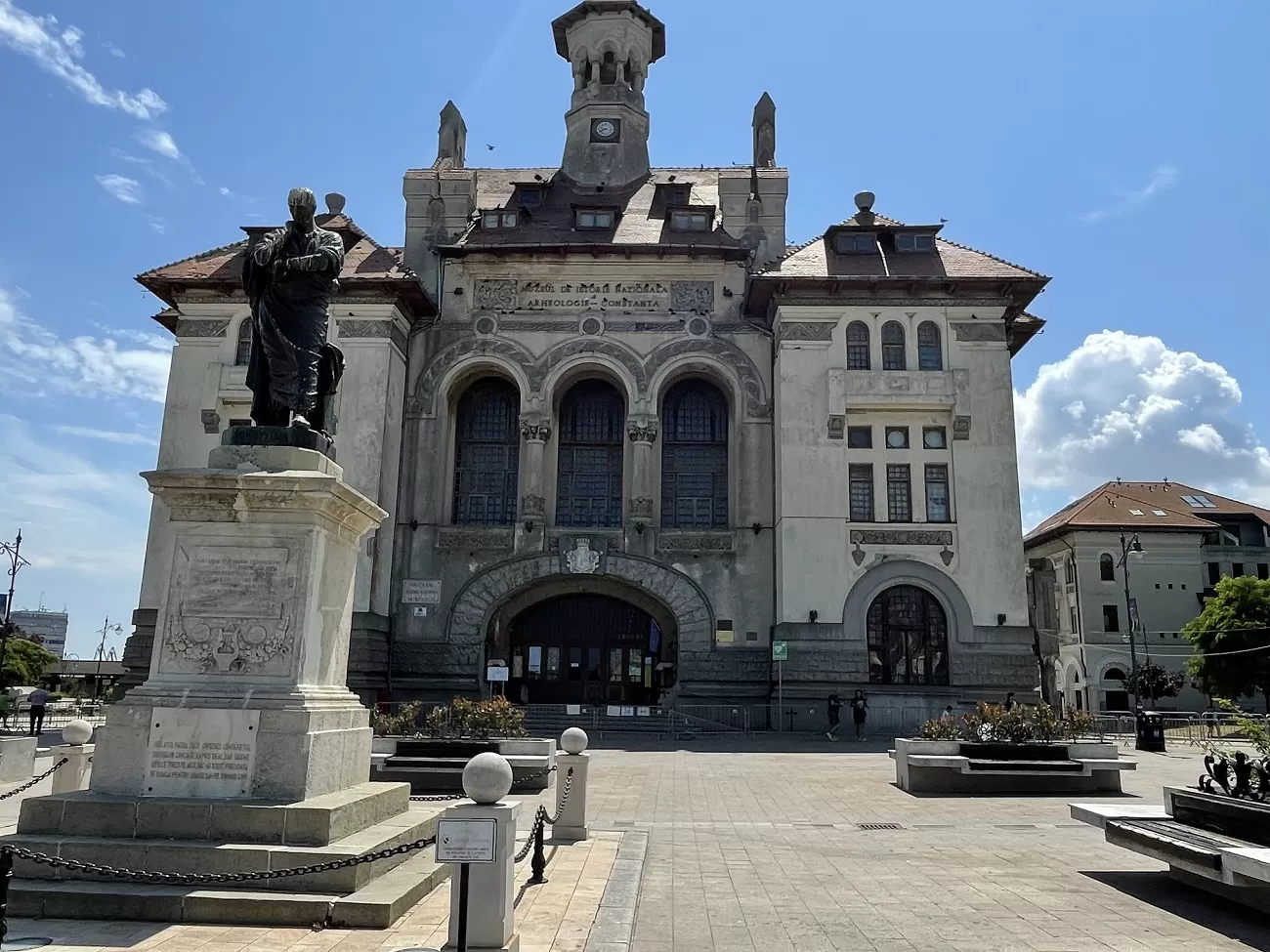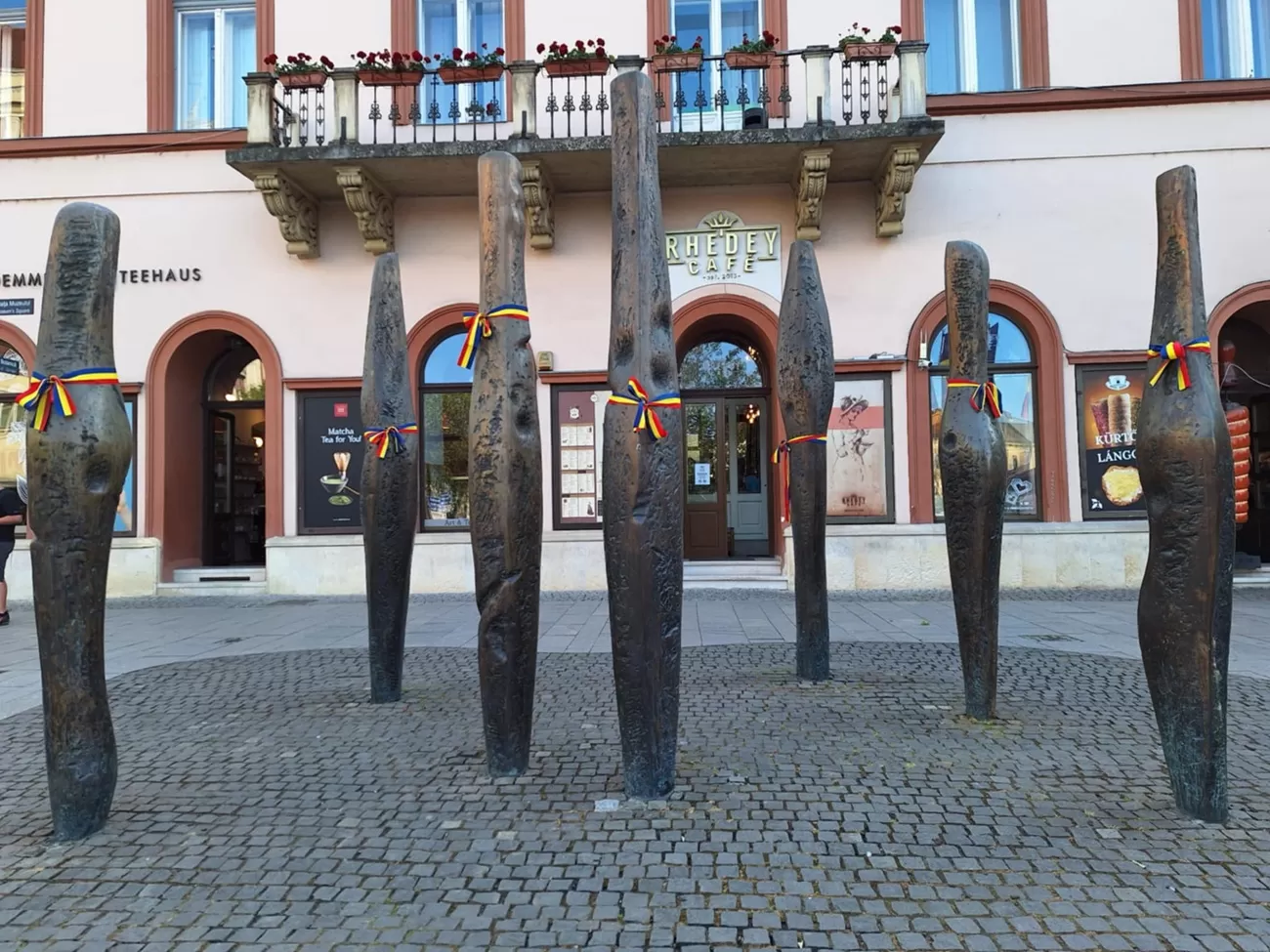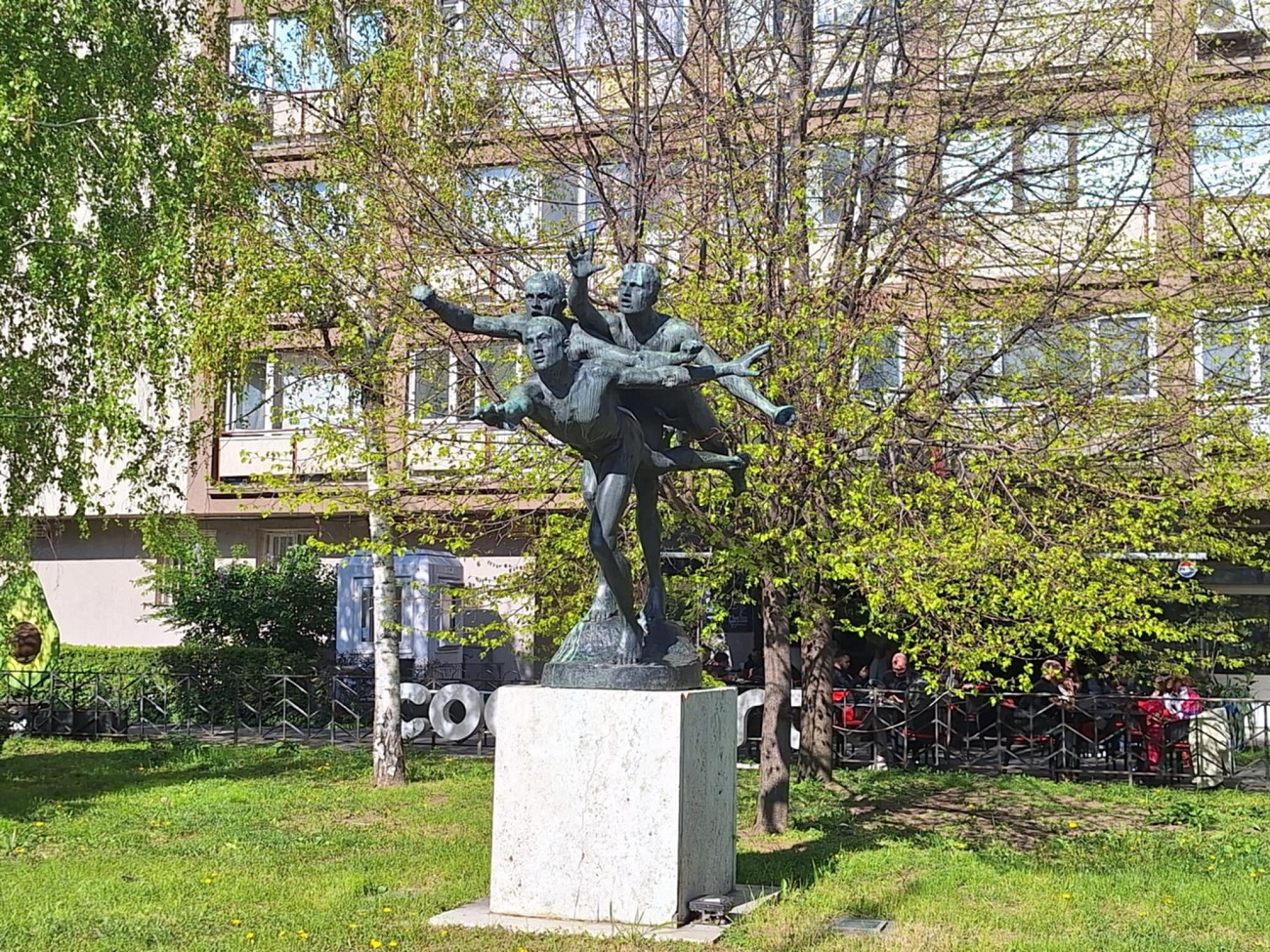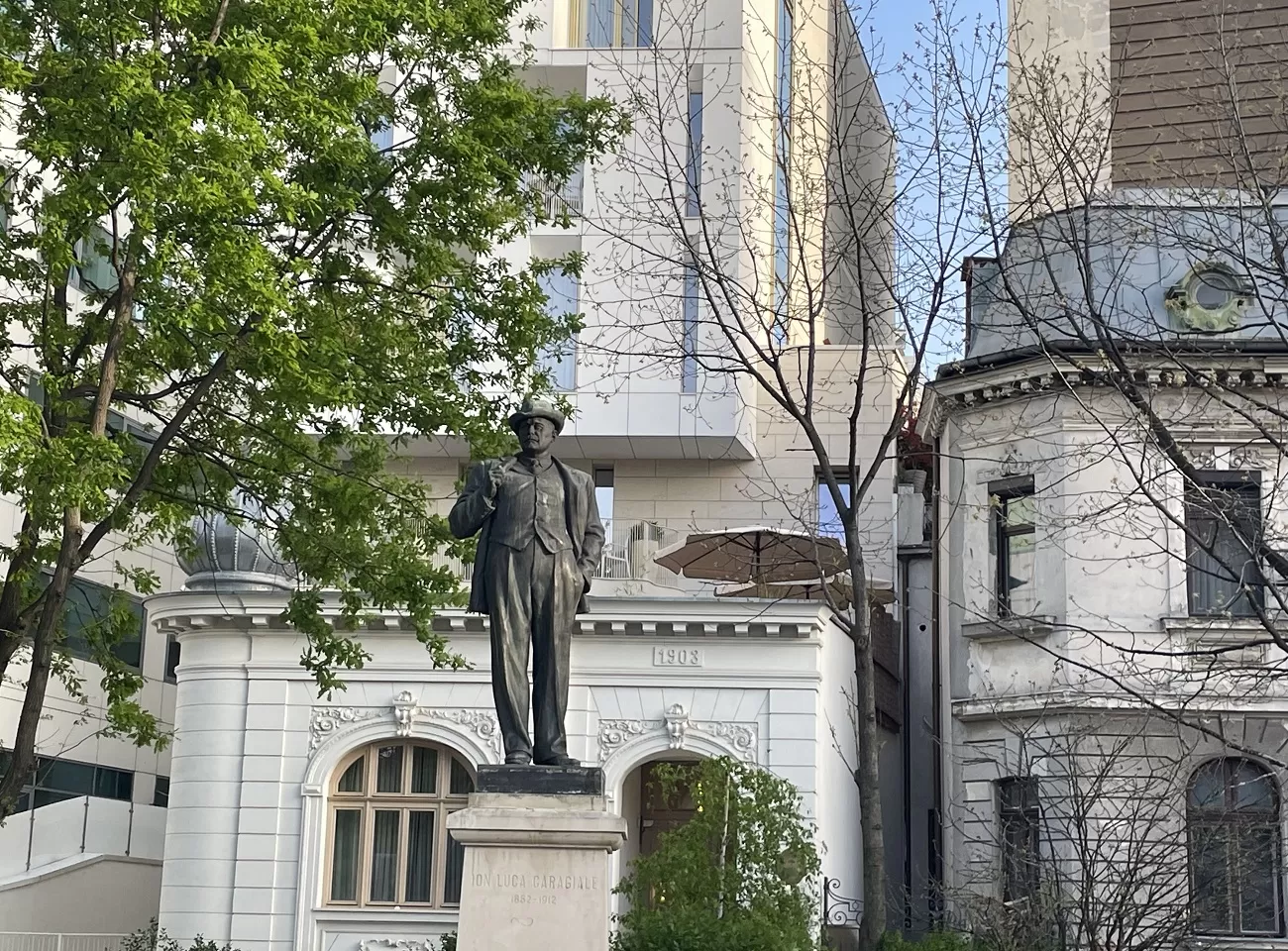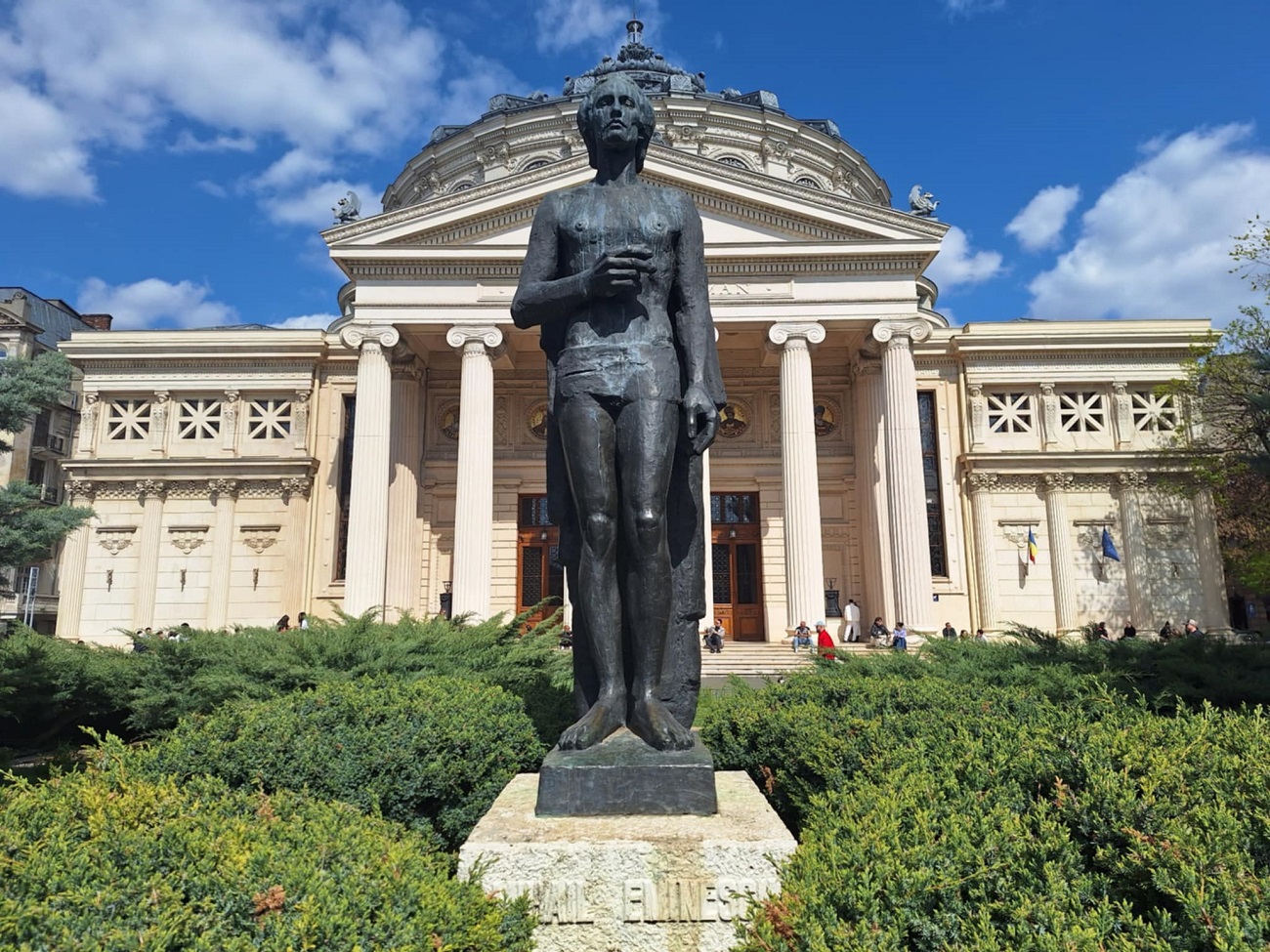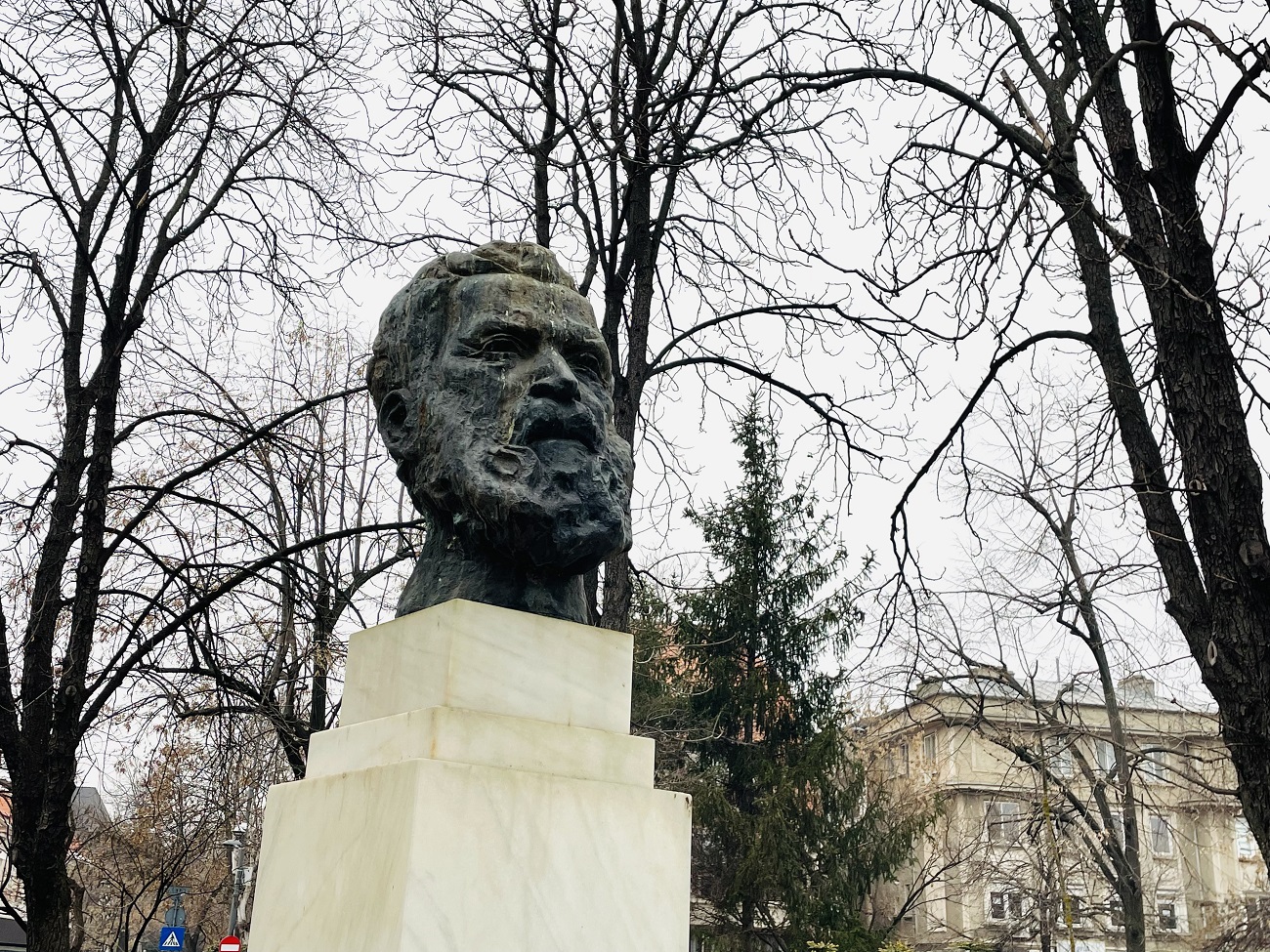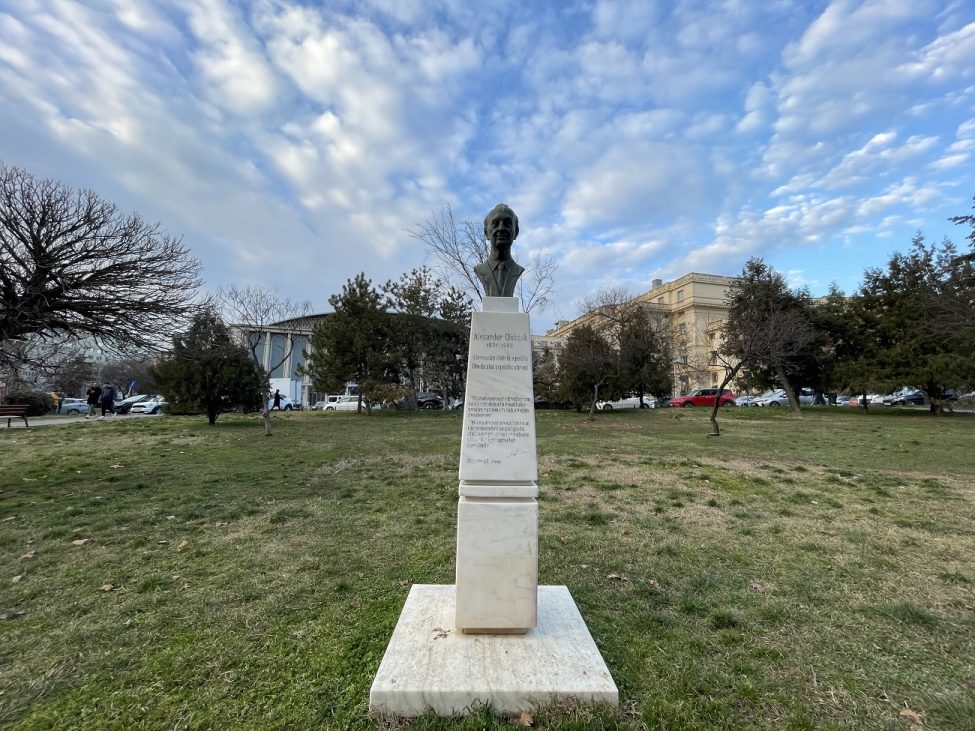
Monumental art – The essential man in Prague Spring
Alexander Dubček, a Slovak politician, known for his Prague Spring reform initiative, is one of the personalities whose busts are located in the Palace Hall Park in Bucharest.
The bust of Alexander Dubček (1921 – 1992) was donated to the city by the Embassy of the Slovak Republic and unveiled in 2016.
Created by sculptor Vít Bojňanský (b. 1962), the work is close to those of Avram Iancu and Corneliu Coposu.
At the helm of Czechoslovakia from January 1968 to April 1969, Alexander Dubček sought to liberalize the communist regime, initiate reforms, including economic changes, giving the press freedom of speech and rehabilitating victims of the 1950s political purges.
His attempt, later called the Prague Spring, failed. Soviet troops invaded. Lives were lost, but a tragedy on the scale of the 1956 Hungarian revolution was averted. Romania and Albania were the Eastern European countries that did not participate in the invasion, an initiative that made the then Romanian communist regime regarded with some appreciation by the West. Budapest 1956 and Prague 1968 were followed in 1980 by Polish Solidarity. The peaceful revolution that began in 1980 led to the fall of communism in Poland nine years later, making it the first Eastern Bloc country to reach agreement at the “Round Table” and, in June 1989, partially free parliamentary elections were held, leading to the collapse of the communist system.





